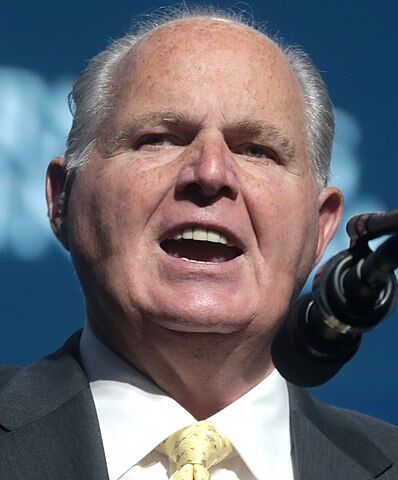
The End of “Fairness” in Media
Created to ensure that the public had access through radio and television broadcast channels to differing viewpoints on controversial issues, the Fairness Doctrine was also abused by three presidents. It was repealed in 1987, setting the stage for the growth of conservative talk radio as it fed the fears and stoked the anger of mostly white Christian Americans.
Established in 1949, the Fairness Doctrine grew out of the government’s desire to ensure that the broadcast frequencies which it licensed would be used in the public interest to present different views on controversial issues. The rule was deemed constitutional, according to a 1969 Supreme Court decision, at a time when there were a limited number of broadcast options available to the public.
Yet conservatives dating back to Barry Goldwater had felt squeezed out of national media coverage. It wasn’t entirely their imagination. In 1975, the New York Times reported that, in fact, the Kennedy and Johnson administrations had used the Fairness Doctrine to pressure broadcasters to limit their commentary in support of Goldwater and conservative issues. President Nixon also advocated using the government’s licensing renewal power to limit what he viewed as “unfair” coverage. This abuse of power fueled conservative anger against the “liberal media” and produced a Republican-led campaign to end the Fairness Doctrine. That campaign eventually won support from several Democrats and members of the so-called “liberal media” that conservatives were so angry with.
By 1987, as the doctrine faced new legal challenges and the growing number of cable networks offered competitive alternatives to the three broadcast channels, the FCC voted 4-0 to repeal the Fairness Doctrine.
Elimination of the Fairness Doctrine opened up the airwaves to conservatives who were ready to reach an audience eager for their anti-government message. By 1995, Rush Limbaugh, whose name became synonymous with conservative talk radio, was reaching 20 million people each day across 650 radio stations. According to Paul Matzko, a research fellow at the Cato Institute and author of the book, The Radio Right: How a Band of Broadcasters Took on the Federal Government and Built the Modern Conservative Movement, Limbaugh “owed his rapid rise to the repeal of the Fairness Doctrine by the Reagan administration in 1987”.
Matzko explained in a 2020 commentary how talk radio turned its millions of listeners into the kind of conservative who “is less focused on free markets and small government and more focused on ethnonationalism and populism”. According to Brian Rosenwald, co-creator of the Washington Post’s “Made by History” blog and author of Talk Radio’s America, Limbaugh stoked populist anger and turned his listeners on to the new “fair and balanced” cable channel that launched in the mid-90s, Fox News. (Fox paid him to advertise the network on his program.) Both Matzko and Rosenwald attribute the election of Donald Trump in 2016 to these angry and newly engaged voters.
Feature Image: Photo of Rush Limbaugh by Gage Skidmore

